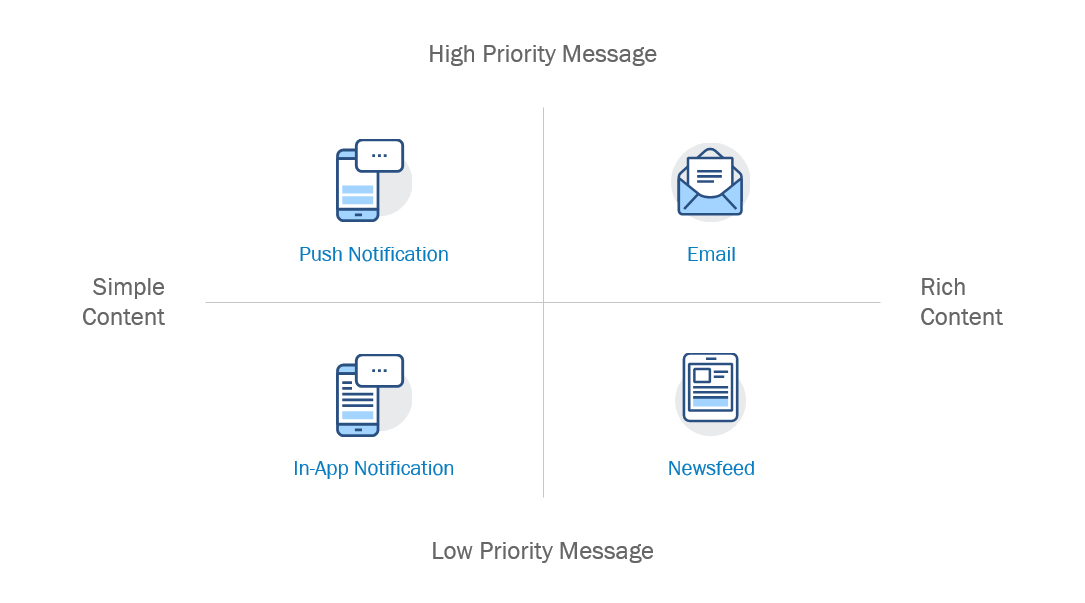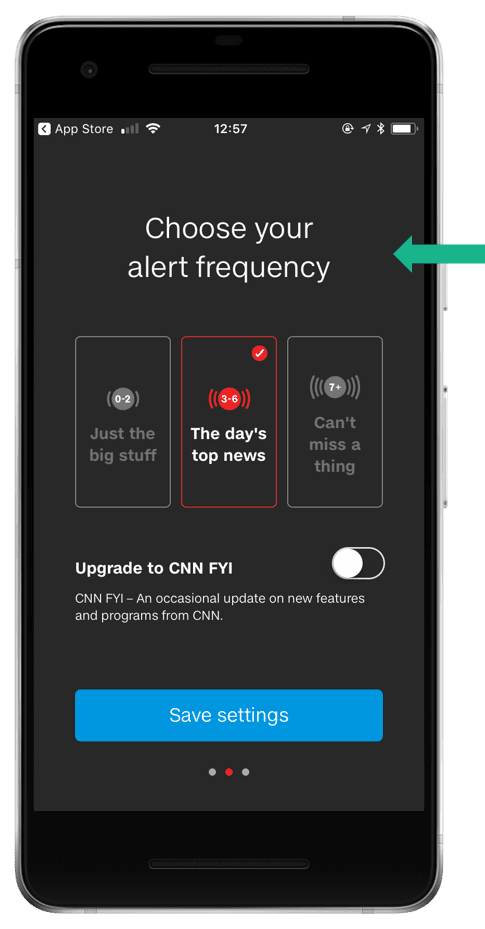4 Communication Best Practices for Omnichannel and Digital UX
Part one of this series introduced how to engage with customers to provide a seamless and genuine omnichannel and digital user experience. In part two, we’ll explore how to effectively communicate with customers, using notifications to reach customers on their terms. Here are four ways to improve how you communicate with customers in an omnichannel and digital approach.
Use different message types to build your communication strategy.
An audience may tune out your messages if they come too frequently from the same channel. With that in mind, it’s essential to establish a communication strategy with varied message types and channels used. The type of message and notification you use to reach customers should depend on three factors: the content being sent, the priority of the message, and the volume with which you’ll be sending such messages. A graph like the one below can be helpful to decide which type of notification to use. Remember, too, high-volume messages should typically be low-priority notification types (i.e. within the app or newsfeed) so as not to wear your audience out.

Chunk key messages to ensure the user can easily scan and comprehend important information.

Using callouts and buttons can help to draw attention to important information. Providing only a single recommended option (among many available options) is a validated best practice for an omnichannel or digital strategy. In the example from Calm, users receive an email with a lot of text, but only one button which immediately calls their attention and makes it clear action is required. It’s important to remember that only one CTA is needed – if everything stands out, then nothing stands out.
Create personalized and relevant notifications that show enough value to justify the interruption.

Don’t waste your customers’ time. This is, of course, a best practice for every brand and every situation, but it becomes magnified when customers are connecting with your brand across multiple channels as they’ll (rightly) expect the same treatment no matter where an interaction takes place. Communications should be relevant and personalized to ensure the interruption created is well-worth customers’ time. CNN knows its customers’ time is valuable, so during the app onboarding process it asks how often customers like to be notified. This puts the power in the hands of the users and lets them decide how often they’d like to be reached.
Understand your target audience, their lifestyles, and needs.

As nice as it would be, your customers aren’t going to be thinking about your brand and products 24/7/365. Given that, it’s necessary to tailor your communications to their lifestyles. This process starts with knowing your customers. Do some beta testing, market research, and customer surveys to find out when customers are most likely to interact with your brand, and then use this information to match their lifestyles. Duolingo, an app that helps people learn new languages, sends lesson reminders to its users on off-hours like 7pm because it knows its users are at school or work during the day.
Offering customers a seamless omnichannel or digital journey starts with instituting best practices in communicating with customers and engaging them on their terms. But it doesn’t end there. Make sure to get the whole story by testing with real users, in real locations, and on real devices to ensure your omnichannel and digital experiences meet the needs of your real customers.
